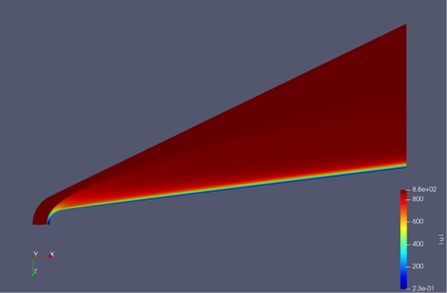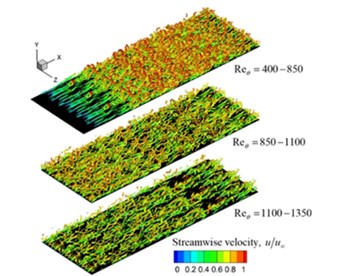Hypersonics:

Fig. 1. Velocity magnitude at a slice of the cone.
Although hypersonic sharp cones have been vastly researched previously, little is known about the flow physics in its base area. By using the Multiscale Ionized Gas (MIG) code, a finite element code that uses discontinuous-Galerkin method, the base flow region will be simulated and compared to experimental tests conducted at Purdue and Florida State University. Before base flows simulations, there are preliminary steps to achieve an accurate base flow simulation which were explored. Firstly, a laminar solution is developed for a Mach 6, zero angle of attack, 7° half-angle cone. Afterwards, turbulent simulations will be conducted where the trip must be tuned to match experimental test.

Fig. 2. Turbulent structures on a flat plate [1]. The goal is to visualize similar structures on the cone that matches experimental work.
[1] Tomas Houba, Arnob Dasgupta, Shivasubramanian Gopalakrishnan, Ryan Gosse & Subrata Roy. Supersonic turbulent flow simulation using a scalable parallel modal discontinuous Galerkin numerical method, Nature, Scientific Reports (2019). (2019) 9:14442 | https://doi.org/10.1038/s41598-019-50546-w